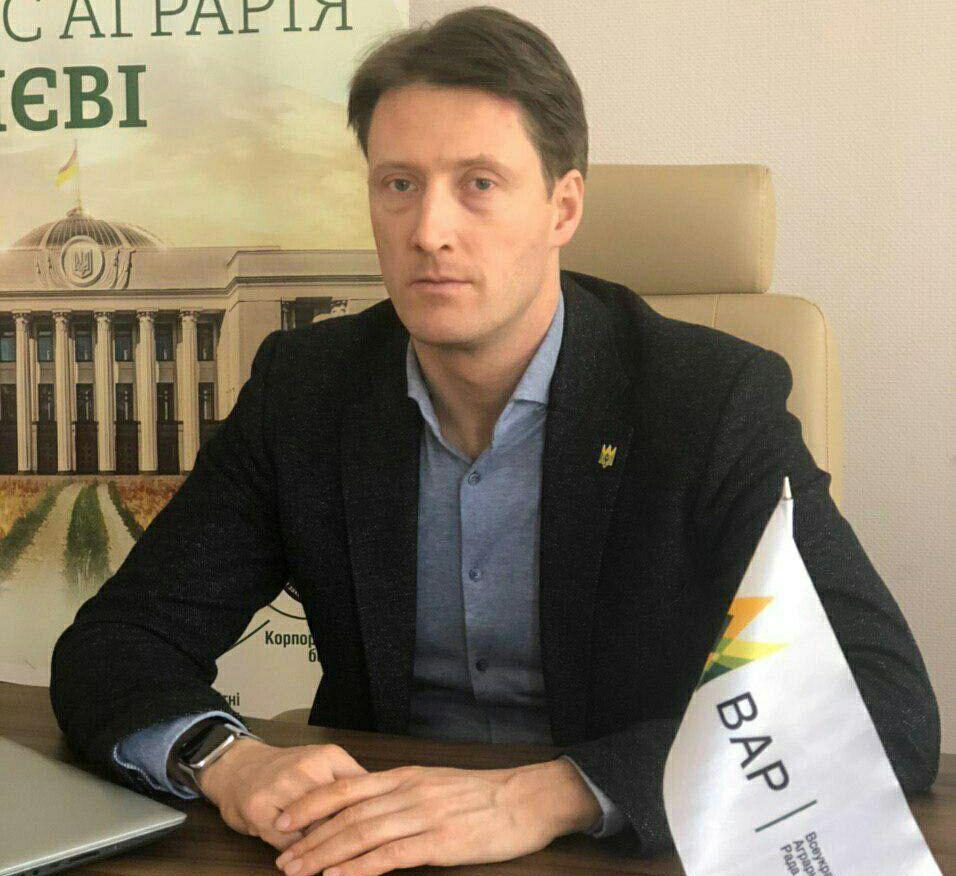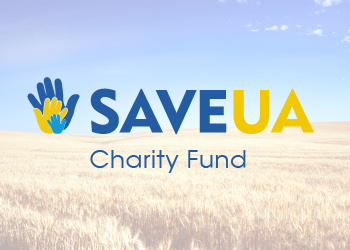
In 2019, a shortage of dairy raw materials emerged in Ukraine. According to the National Science Center "Institute for Agrarian Economics", in 2019, Ukrainian producers have lost about 10% of raw materials, as farmers reduce the number of cows in anticipation of the opening of the agricultural land market, raising funds to buy their land bank. This means that the Ukrainian domestic market for milk and dairy products can be taken by importers. At the same time, the crisis caused by the loss of the Russian market has not yet been overcome - Ukrainian milk processors have not been able to re-orient their supplies to highly competitive EU markets; European consumers prefer cheeses that are not produced in Ukrainian enterprises. The deputy chairman of the Ukrainian Agri Council (UAC), Mykhaylo Sokolov, spoke about how much the dairy production was affected by the situation with the introduction of the land market and how to preserve the dairy industry in Ukraine.
-Mykhaylo, domestic milk production in Ukraine is declining ... How can our country help in this?
Our dairy industry is generally in a very bad position because we have to compete with foreign producers in a disadvantaged environment. Overall, there are several global players in the global market. First of all, it is New Zealand. It's just a monster of the dairy industry. Due to the natural climatic conditions, there are low costs for milk production. It is warm all year long: green pastures, enough moisture, cows are free to graze. Therefore, New Zealand is the global leader in the market for butter and milk powder - that is, easily transported dairy products. The United States is another global player that has relied on high-tech industrial milk production. If a large farm in Ukraine is 1000 actual cows, then in the USA a 5000-head farm is a common occurrence and 30,000 "monsters" are considered large. But this is a world market, and Ukraine is closer to Europe. Accordingly, our key competitors are European manufacturers.
In the US, there is government support for farmers. EU farms are smaller, but government support is twice as high. Plus, there are cheap loans available to farmers there. Our farms are small and there is little government support, and loans are expensive, and we are not New Zealand in terms of climate.
Our subsidy is not at all comparable to European volumes. If we had the same amount of subsidies per hectare, Ukraine would spend about 400 billion hryvnias a year on agriculture, with a total budget of about 1100 billion hryvnias. For comparison, in 2020 it is planned to spend 4 billion hryvnias for state support, which is 100 times less.
By the way, we often hear that Ukrainian farmers are paying low rent to shareholders. However, this is not true. Now Ukrainian shareholders lease the land at the price of 3-6,5 thousand UAH per 1 ha per year, at the current rate of 100 to 200 euros per ha. State subsidies are 100 UAH per hectare, or $ 4. However, in Lithuania, the amount of subsidies per hectare is 130 euros, and rent is about 110 euros, so the state subsidies fully offset the costs.
-Can we say that in the absence of sufficient state subsidies in Ukraine, dairy production is becoming less profitable?
With animal husbandry it is difficult: sometimes it is profitable, sometimes it is not. We have an Association of Milk Producers, which is an associate member of UAC. They have relied on technology to make this production as efficient and profitable as possible. As a result, a number of AMP members are profitable, but this is achieved by the fact that the yields in such enterprises are higher by an average of 30% or more, that is, higher than in the country and their costs are lower. However, this level of efficiency is a truly remarkable achievement, and it is obvious that the whole dairy industry is unlikely to be able to work with such indicators.
- In your opinion, the production of milk and dairy products can be a profitable and very profitable business in Ukraine?
Now animal husbandry is more of a social project than a commercial one: it's a way to keep shareholders busy. And the good thing is that it is possible to create jobs in this way, which means that not only it solves the problem of employment, but also fills the budget - we still have a tax burden on the payroll fund, so any workplace is a significant increase in budget revenues.
-How do dairy farmers react to the expected introduction of the land market?
First of all, UAC members and livestock farmers, in particular, assume that the land market in Ukraine will be unambiguously introduced, and will be introduced in the near future. Therefore, in 2019, they tried to reduce all costs, and withdrew everything they could into money. For example, they donated less productive cows to meat and thus accumulated cash reserves to buy the land they are currently cultivating. Therefore, Ukrainian livestock farmers stopped buying new cows. Why? If the agrarian is not able to buy the land, cows are not needed. Where to grow the feed for them, then? The roughage that is needed for cattle cannot be bought, it is not compound feed; As a result, we have a record fall in livestock rates in 2019. And this despite the fact that last year there were formed good prices for milk in Ukraine. This is probably the first year that raw milk prices are high in our country.
We see the same thing in the agricultural machinery market: all sellers are talking about a sharp drop in demand from farmers, because they are raising money to buy agricultural land.
Even JP Morgan analysts say that "despite the jump in investment, we forecast a moderate slowdown in 2020 amid declining gas transit and some negative short-term impacts of land reform." In other words, they even admit that the impact of the opening of the land market on agricultural GDP growth will be negative.
To address this, we propose the government to make a special program for supporting livestock. Guarantee 100% repayment to banks of the money taken for the purchase of land for cultivation of forage at the rate of 1.5 hectares per cow, compensation of interest on such loans beyond the government's planned limit - no more than 5 million UAH in one pair of hands, redemption in installments of 5-10 years and at the firm price of state land at the same rate of 1.5 hectares per cow.
Then the agricultural producer will understand: it is unprofitable to sell a cow, it is more profitable to keep it, because in this case there will be money for the purchase of land, premises for the production of feed, and profit from the sale of milk.
There is also another problem that will not be solved by the authorities' approach. The land market is scheduled to open in the fourth quarter of 2020. It is already clear that the small and part of the average remaining agrarians will not have enough time not only to raise money for the purchase of land, but also to prepare their businesses for the requirements of banks, without which credit cannot be obtained. As a result, the government's 5% preferential national currency lending program will not be able to help such farms because they are simply unable to take a loan.
-Mykhaylo, you mentioned during the roundtable on the land market that about 7 million hectares of state-owned land in Ukraine will now be distributed to territorial communities. How will this affect livestock and dairy farming and whether farmers can claim these lands?
Basically, the very transfer of state-owned land to communal property is a step that agrarians have insisted on for the last 5 years. In my opinion, it is obvious that an official in Kiev is not able to determine how best to dispose of land better than the territorial community. With regard to dairy farming, this measure is unlikely to have any serious impact on its development.
-Today, is selling milk and dairy products abroad more profitable than selling domestically in Ukraine?
No, it is not.
-Are there enough quotas for EU supplies?
The EU quotas for the supply of Ukrainian milk and dairy products are small, excluding quotas for the supply of cheese - they simply do not exist. But in 2019, this is no longer relevant. We are transformed from an exporter to a net importer of milk and dairy products. Previously, we did export dairy products. Milk and dairy production in Ukraine exceeded consumption by about 20% and were sold in the Russian Federation.
The dairy crisis of 2014 was caused by the loss of the Russian market. For our producers, it was not only a premium due to the absence of duties on Ukrainian products, while products from other countries were taxed, but also their market niche, protected from European products by the eating habits of Russians. We traditionally produce hard cheeses that are familiar to Russians and Ukrainians because of the common Soviet past, but they are not common to Europeans.
-Mykhaylo, did you calculate at UAC how much more expensive or cheaper imported milk or dairy products would be?
Imported milk costs about the same as Ukrainian milk. We have a higher VAT on dairy products than in Europe.
-Do we need to save the dairy industry and how to do it?
It should be saved. There is a plan; we have already discussed some of it. In addition, a law must be adopted to allow consumers to distinguish dairy products from products that are only imitate being dairy. And there is such a problem. You can go to the store and see the packs of butter on the shelf, but you are unlikely to realize that the composition is not butter - at best those are spreads or margarines. But they are cheaper, and there is a raw material - 26%, the rest - palm oil.
In some cases people would rather have better vegetable oil, and in some cases - animal fats, proteins. A costumer just has to understand what he or she is buying. And now, many Ukrainians think that they buy natural dairy products for their children, and in fact, this is far from true.
-What do you think about “coconut milk” written on milk packaging?
There is nothing wrong here. After all, people understand that coconut milk is not milk, because coconut is a fruit. There’s juice, not milk. We are not concerned that concepts such as “milk chocolate”, creamer and cream soup are used all over the world. People understand that this is not milk, that milk is included in these products as just one ingredient or not at all, as in the case of coconut and soy milk. These names do not mislead buyers.
The problem is with products that, by their name or packaging design, are disguised as natural dairy, but are not. The proliferation of such pseudo-dairy products has led to the fact that the demand from processors for real milk is steadily falling, because in the diet of consumers they replace products made from milk.
In the dairy industry, lost production will not be returned, because the investment cycle in livestock is a really long cycle, it takes 10 years: to buy livestock, to start investments in equipment, in technology, to teach people, and milk will only appear for the 3rd year.
Thursday, 23 January 2020